
Keep the Faith is the fifth studio album by American rock band Bon Jovi, released on November 3, 1992, by Mercury Records. It is Bon Jovi's last studio album to feature all five original band members as bass guitarist Alec John Such was dismissed from the band in 1994, though it was not his last release with the band. It is Bon Jovi's first album to not be produced by either Lance Quinn or Bruce Fairbairn. The album was produced by Bob Rock and was recorded at the Little Mountain Sound Studios in Vancouver, British Columbia. Keep the Faith marked a change to a "more serious interpretation of the band's pop-metal groove". It is also Bon Jovi's longest album to date, clocking in at 66 minutes.

Sacred Love is the seventh studio album by the English musician Sting. The album was released on 29 September 2003. The album featured smoother, R&B-style beats and experiments collaborating with hip-hop artist Mary J. Blige and sitar player Anoushka Shankar. Some songs like "Inside" and "Dead Man's Rope" were well received; and Sting had experimented with new sounds, in particular the more rock-influenced "This War".

Human Touch is the ninth studio album by American singer-songwriter Bruce Springsteen. The album was released on March 31, 1992, the same day as Lucky Town. It was the more popular of the two, peaking at number two on the US Billboard 200 chart, and lead single "Human Touch" peaking at number one on the Mainstream Rock and number 16 on the Billboard Hot 100 charts. "Human Touch" has since Platinum by the Recording Industry Association of America (RIAA) for over one million copies sold in the US, and was nominated for Best Rock Vocal Performance at the 1993 Grammy Awards.
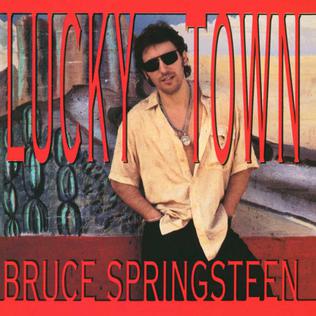
Lucky Town is the tenth studio album by American singer-songwriter Bruce Springsteen. The album was released on March 31, 1992, the same day as Springsteen's ninth studio album Human Touch. Lucky Town peaked at number three on the Billboard 200, with lead single "Better Days" peaking at number one on the US Mainstream Rock and number 16 on the Billboard Hot 100 charts. Lucky Town has since been certified Platinum by the Recording Industry Association of America (RIAA), for over one million copies sold in the US.

The One is the twenty-third studio album by British recording artist Elton John, released on 22 June 1992. It was recorded at Studio Guillaume Tell in Paris, produced by Chris Thomas and managed by John Reid. The album was dedicated to Vance Buck, and its cover artwork was designed by Gianni Versace.

Diamonds and Pearls is the thirteenth studio album by American recording artist Prince, and the first with his backing band The New Power Generation. It was released on October 1, 1991, by Paisley Park Records and Warner Bros. Records. The album produced several hit singles, including "Gett Off", "Cream", "Money Don't Matter 2 Night", "Insatiable", and the title track. Dancers Lori Werner and Robia LaMorte, known as "Diamond" and "Pearl" respectively, appeared on the holographic cover. Diamond and Pearl also appeared in the music videos for "Cream", "Strollin'", "Gett Off", and the title track, and also participated in Prince's Diamonds and Pearls Tour.

Listen Without Prejudice Vol. 1 is the second solo studio album by the English singer-songwriter George Michael, released on 3 September 1990 by Columbia Records. The album was Michael's final album of all-new material on Columbia until 2004's Patience. Listen Without Prejudice was a stark departure from Michael's previous album, 1987's Faith, with largely acoustic instrumentation and a sombre intensity in many of the lyrics and melodies. While the album topped the UK Albums Chart, disappointing sales in the United States led to Michael's legal battles against Sony Music, in which he accused the corporation of not fully supporting him as an artist.

... Nothing Like the Sun is the second solo studio album by English musician Sting. The album was originally released on 5 October 1987 on A&M (worldwide) as a double LP and single CD. The album explores the genres of pop rock, soft rock, jazz, reggae, world, acoustic rock, dance-rock, and funk rock. The songs were recorded in March–August 1987 during sessions that took place at AIR Studios, in Montserrat, assisted by record producers Hugh Padgham, Bryan Loren, and Neil Dorfsman. It features a number of high-profile guest guitarists, including former Police member Andy Summers, Eric Clapton, Mark Knopfler, and Hiram Bullock, and is generally regarded as the culmination of the smoother, more adult-oriented sound of Sting's early work.

AC/DC Live is the second live album by Australian hard rock band AC/DC, released in October 1992. Two versions were released, one containing a single CD, with the second version being a double album on LP and CD known as AC/DC Live: 2 CD Collector's Edition. A feature-length live video, AC/DC: Live at Donington, was released concurrently. The double album AC/DC Live: 2 CD Collector's Edition was released a month after the single-disc version, in a slipcased two-disc "book" and containing an AC/DC dollar note known as "Angus Bucks". Both editions of the album were re-released in 2003 as part of the AC/DC Remasters series.

Made in England is the twenty-fourth studio album by English musician Elton John, released in 1995. It was produced by John and Greg Penny, his first album since Leather Jackets without producer Chris Thomas. The album was dedicated to John's boyfriend and future husband David Furnish. It was also dedicated to the memory of Denis Gauthier and Peter Williams. It was the last album to feature regular percussionist Ray Cooper until 2016's Wonderful Crazy Night. Bob Birch became John's full-time recording and touring bass player until his death in 2012.

Live – The Way We Walk, Volume Two: The Longs is the fifth live album by British band Genesis and was released on 4 January 1993 in the United Kingdom, having been recorded during their 1992 tour for We Can't Dance. The album's title refers to a lyric in two songs, "I Can't Dance" on the previous volume and "I Know What I Like" on this one.
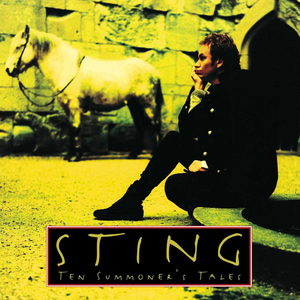
Ten Summoner's Tales is the fourth solo studio album by English musician Sting. The title is a combined pun of his family name, Sumner, and a character in Geoffrey Chaucer's The Canterbury Tales, the summoner. Released in 1993, it explores themes of love and morality in a noticeably upbeat mood compared to his previous release, the introspective The Soul Cages released in 1991 after the loss of both his parents in the 1980s.
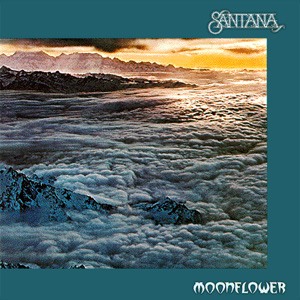
Moonflower is a double album released in 1977 by Santana. The recording features both studio and live tracks, which are interspersed with one another throughout the album. It is perhaps the group's most popular live album, because the 1974 album Lotus did not receive a U.S. domestic release until 1991. It displays a mix between the fusion of Latin and blues rock styles of the late 1960s and early 1970s, and the much more experimental and spiritual jazz fusion sound that characterized the band's mid-1970s work. The live material was recorded during the supporting tour for the Amigos album. This is the first of 5 albums with drummer Graham Lear.

Fields of Gold: The Best of Sting 1984–1994 is the first greatest hits album by English musician Sting. Released in 1994, it features hit singles from his first four studio albums The Dream of the Blue Turtles (1985), ...Nothing Like the Sun (1987), The Soul Cages (1991), and Ten Summoner's Tales (1993), plus two new tracks. A companion music video compilation was released on LaserDisc and VHS.
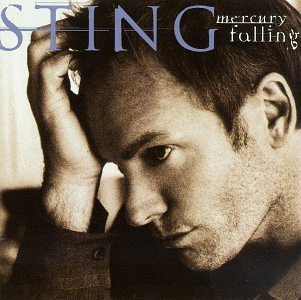
Mercury Falling is the fifth studio album by English musician Sting. It was released on 26 February 1996 through A&M Records and was produced by Sting alongside longtime producer Hugh Padgham. The album features many tracks which see elements of soul and country music integrated to a greater extent than on past releases. Supporting musicians on the album include frequent collaborators Dominic Miller on guitar, Kenny Kirkland on keyboards, Vinnie Colaiuta on drums, and Branford Marsalis on tenor and soprano saxophone.

Brand New Day is the sixth solo studio album by English musician Sting, released by A&M Records on 27 September 1999. Promoted heavily by the success of the album's second single, "Desert Rose", the album peaked at number nine on the Billboard 200 and sold over 3.5 million copies in the United States. Upon its release, Brand New Day was a critical and commercial success, and hailed as commercial comeback for Sting.

In Square Circle is the twentieth studio album by American singer-songwriter Stevie Wonder, released in 1985. The album features the hit singles "Part-Time Lover", "Go Home", "Overjoyed", and "Land of La La". The album earned Wonder a Grammy for Best Male R&B Vocal Performance at the 1986 Grammy Awards.
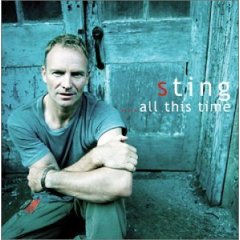
...All This Time is a live album and concert film by Sting, recorded and filmed on 11 September 2001. It was recorded at Sting's Villa Il Palagio in Italy in front of a select audience drawn from his fan club and features live versions of Sting's songs from his Police and solo song catalogue. The album and video get their name from the song of the same name from his album The Soul Cages.

Greatest Hits is the second greatest hits album by the Police, released in September 1992 by A&M Records. It is the band's second compilation album following Every Breath You Take: The Singles. In contrast with its predecessor, it features all 14 original UK top 20 chart singles and five UK number-ones released by the band from 1978 to 1984, including the two missing singles from the previous 1986 compilation, "Synchronicity II" and the original version of "Don't Stand So Close to Me" which had been replaced with the 1986 re-recording. The album also includes two bonus album tracks, "The Bed's Too Big Without You" and "Tea in the Sahara". The cover photograph was by Duane Michals and it was taken at the time of the Synchronicity album. The inner sleeve featured a collage of pictures of the band shot by different photographers during their career, including Miles Copeland, Peter Baylis, Adrian Boot, Akihiro Takayama, Anton Corbijn, Danny Quatrochi, Gabor Scott, Janette Beckman, Kim Turner, Michael Ross, Watal Asanuma and Andy Summers.

The discography of British singer Sting. Born Gordon Sumner in 1951, he was a member of the jazz group Last Exit, who released a cassette album in 1975. With the Police, Sting sold over 100 million records and singles. As a solo performer, he has released 15 albums between 1985 and 2021, most of which have sold millions of copies worldwide.

















